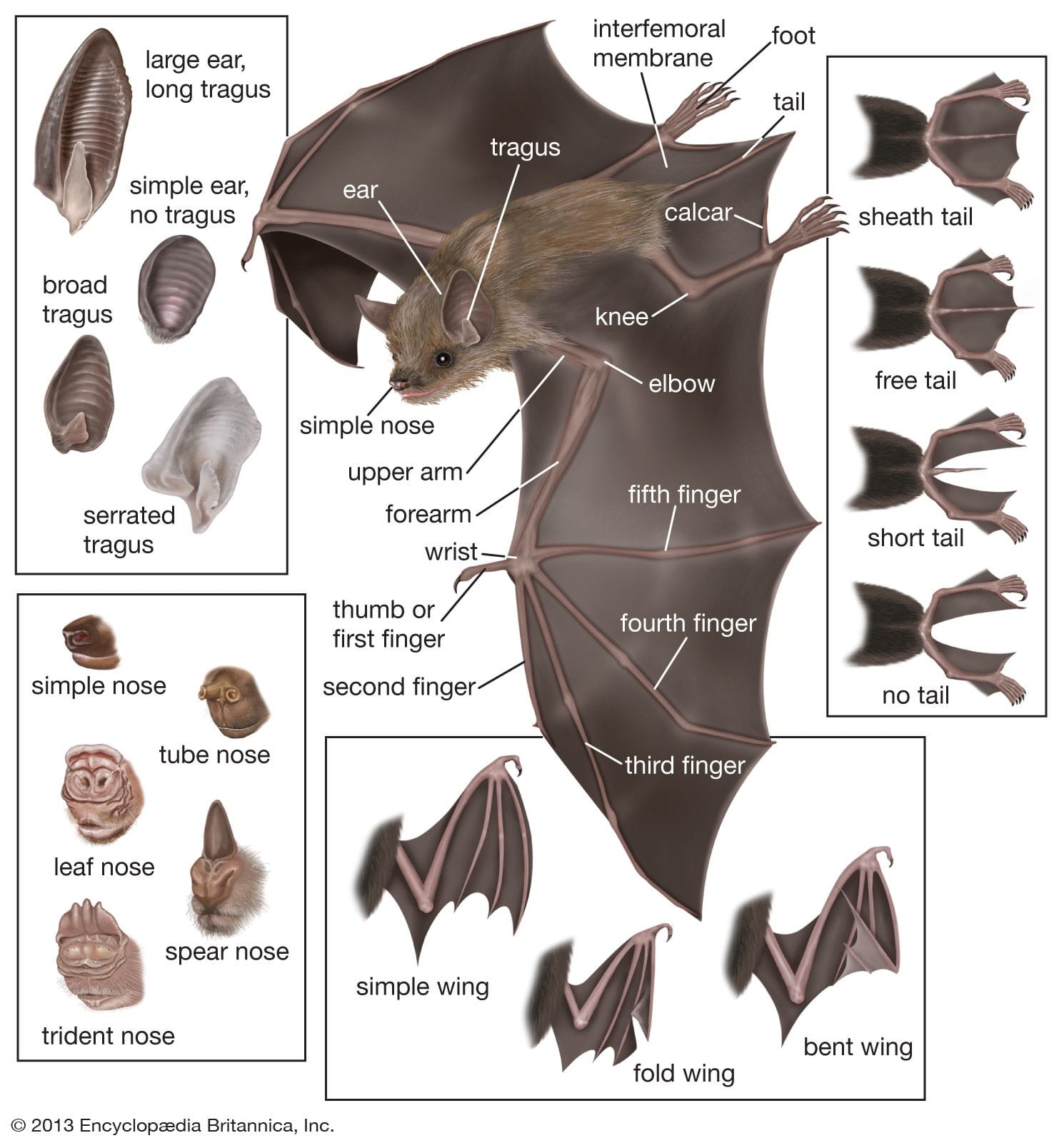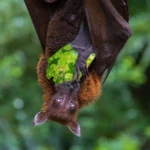Hey there, curious readers! Let’s dive into the world of bats and discover what makes their lifespans so intriguing. We’ll uncover the secrets behind their longevity, from the factors that shape it to the amazing adaptations they’ve developed to survive in their unique environments. Get ready for a fascinating journey into the lives of these extraordinary creatures!
Unveiling the Secrets of Bat Lifespans
Like us humans, bats come in various shapes and sizes, and their lifespans vary just as much. On average, these nocturnal wonders can flutter around for a respectable 20 years. But hold your breath, because some batty folks, like the brown long-eared bat, have been known to soar past 30 years!
But wait, there’s more! The grand prize for the longest-living bat ever goes to Pipistrellus pipistrellus, a female greater horseshoe bat who clocked in at an incredible 41 years! So, what’s their secret to longevity?
Factors that Sway a Bat’s Life
Like a well-crafted recipe, a bat’s lifespan depends on a mix of ingredients:
- Size matters: Smaller bats tend to have shorter lifespans than their larger counterparts.
- Diet choice: Bats that feast on insects typically have shorter lives than those that indulge in fruits or nectar.
- Home sweet home: Habitat availability and temperature can make or break a bat’s longevity.
Bats: The Ultimate Night Owls
Despite facing challenges like habitat loss and disease, bats are surprisingly resilient. They’ve got the gift of flight and the cloak of darkness on their side, which gives them a leg up in the survival game.
Appreciating Our Batty Buddies
By understanding bat lifespans and the factors that shape them, we can better appreciate these extraordinary creatures and the vital role they play in our ecosystem. So next time you spot a bat fluttering through the night, give a nod to their impressive staying power and the mysteries they hold. Curious about what a group of bats is called? Venture into the world of bats and uncover this fascinating tidbit with a simple click.
Quenching your thirst for knowledge about a bat’s diet? Embark on a culinary adventure and discover the secrets of these nocturnal creatures’ eating habits.
Intrigued by the collective term for a flock of bats? Soar into the realm of bat terminology and unearth this intriguing linguistic gem.
Unveiling the Longevity Secrets of Bats
Imagine this: a creature that glides through the darkness, evading predators and living longer than most of us ever will. That’s the incredible world of bats, the masters of longevity.
Bats have a unique talent for outliving their furry counterparts, with some species reaching the ripe old age of 41! What’s their secret? Scientists have been on the case, and here’s what they’ve uncovered so far:
Hibernation: The Fountain of Youth
When the nights grow long and cold, bats tuck themselves away for a cozy hibernation. This deep sleep not only helps them conserve energy but also slows down their metabolism, potentially extending their lives.
Habitat: Location, Location, Location
Bats that call the colder, higher-latitude regions home tend to have longer lifespans than their equatorial counterparts. Surviving in harsh conditions seems to toughen them up and give them an edge.
Size Matters (Sometimes)
In the bat world, bigger can be better when it comes to longevity. Male bats with larger home ranges often live longer than their smaller cohorts.
The Genetic Enigma
While these factors play a role in bat longevity, the real secret lies in their genes. Scientists are still unraveling the genetic code that allows bats to defy the aging clock.
So, what can we learn from the batty elders? Their longevity is a testament to the power of adaptation and the mysteries that nature still holds. As we continue to study these fascinating creatures, we may just unlock the secrets to unlocking longevity for us humans too.
Uncovering the Factors Affecting Bat Lifespans
Have you ever wondered why bats can live so much longer than many other mammals? It’s not just because they hang upside down! Scientists have been studying bats to figure out the secrets behind their remarkable longevity, and they’ve discovered some fascinating factors that contribute to their long lives.
Food Choices Matter
Just like you, bats need a healthy diet to stay alive and well. Different types of bats have different favorite foods, from insects to fruits and even other animals. But the one thing they all have in common is that they need a variety of nutrients to fuel their long lives.
Stress Resistance
Bats are masters at dealing with stress. Their cells are tough and can handle damage from pollution, extreme temperatures, and even harmful chemicals. This stress resistance helps them stay strong and healthy even when they face challenging conditions.
Repairing the Blueprints
Inside every living creature, there’s a set of instructions called DNA. These instructions tell the body how to build and repair itself. Bats have a whole bunch of genes that let them fix any damage to their DNA. This means their bodies can stay in tip-top shape for longer.
Other Cool Factors
In addition to these key factors, scientists have also found that bats:
- Have a special ability to keep their cells from breaking down
- Produce lower levels of harmful chemicals that can damage cells
- Have DNA repair genes that are extra efficient at fixing mistakes
By understanding what makes bats live so long, scientists hope to learn more about how to help other animals, including humans, live healthier, longer lives.
So there you have it, the secrets behind bat longevity!
Decoding the Mysteries of Bat Lifespans: A Comprehensive Exploration
Have you ever wondered why bats live so long compared to other animals their size? Scientists have been scratching their heads over this biological enigma for years, and now we’re finally getting some answers.
The Secrets Behind Bat Longevity
Imagine if you could live like a bat! These nocturnal flyers have lifespans that are off the charts. Take the brown long-eared bat, for instance. It can hang upside down and avoid predators for an amazing 30 years or more! What’s their secret?
Well, it’s not just one thing. It’s a combination of factors that enable bats to outlive their mammalian buddies.
1. Hibernation: The Power of Rest
When winter comes around, bats don’t just shiver and wait it out. They go into hibernation, a deep sleep where their body temperatures plummet and they barely breathe. This cozy hibernation period helps them conserve energy and escape the harsh elements. Scientists think it could even slow down aging.
2. DNA Repair Masters: Fixing Cellular Damage
Bats have a superpower when it comes to DNA repair. They have plenty of genes that can fix cellular damage, the kind of damage that can lead to aging and disease. So, if a bat’s cells get a few boo-boos, their DNA repair crew rushes in to patch them up.
3. Unique Genetic Gizmos
Hold onto your hats, because scientists have discovered special genes in bats that help them age gracefully. These genes help keep their cells healthy and functioning properly for longer periods of time. It’s like having a secret recipe for longevity!
What Bat Longevity Tells Us
Studying bats’ long lives isn’t just for fun and games. It can give us clues about how to live longer and healthier lives ourselves. By understanding the tricks that bats have up their furry sleeves, we might find ways to prevent or treat aging-related diseases that affect humans.
So, next time you see a bat flitting by in the evening sky, give it a nod. These nocturnal creatures are teaching us valuable lessons about the mysteries of life and aging.
FAQ
Q1: What is the average lifespan of a bat?
A1: On average, bats can live up to 20 years, with some species living for over 30 years. The world record for bat lifespan is 41 years.
Q2: What factors influence bat longevity?
A2: Bat longevity is influenced by various factors, including hibernation, body size, diet, and even their latitude. Hibernating bat species located in extreme latitudes live longer than those closer to the equator. Additionally, larger males are associated with longer lifespans in bats.
Q3: How do bats compare to other mammals in terms of lifespan?
A3: Bats have extreme longevity compared to mammals of similar size. The ancestral bat lived 2.6 times longer than a similarly sized mammal. This extreme longevity has evolved at least four times in bats.
Q4: What are some of the unique physiological adaptations that contribute to bat longevity?
A4: Bats possess several physiological adaptations that may contribute to their longevity. They have high levels of DNA repair genes, which help to maintain their genetic integrity. They also exhibit increased resistance to various stressors, including toxins, heat, and DNA damage.
Q5: What is the role of hibernation in bat longevity?
A5: Hibernation may play a role in bat longevity. During hibernation, bats reduce their body temperature, metabolic rate, and respiratory rate. This can help to reduce oxidative damage and extend their lifespans.
- Mastering Leader in Spanish: The Complete Guide - April 19, 2025
- Uncovering Surprising Parallels: England Size Compared to US States - April 19, 2025
- Old Mexico Map: Border Shifts 1821-1857 - April 19, 2025
















